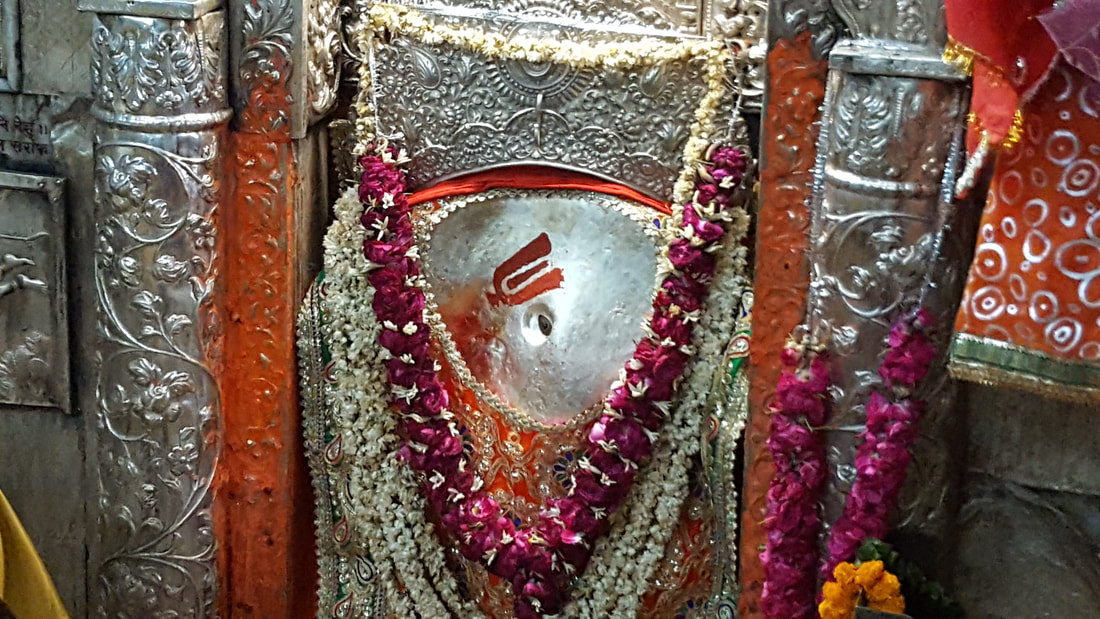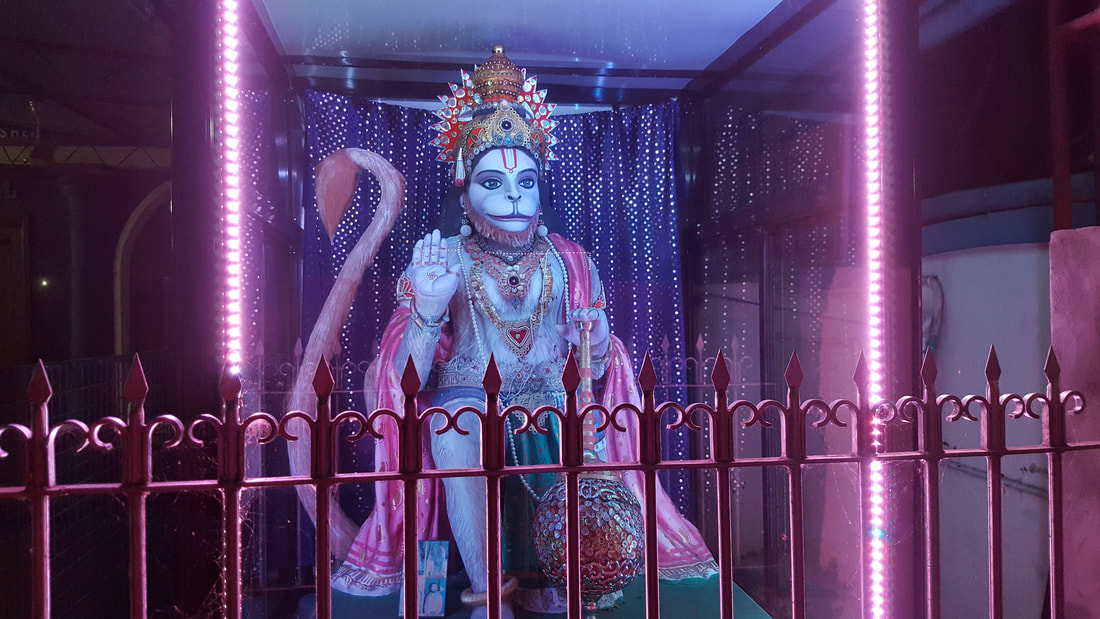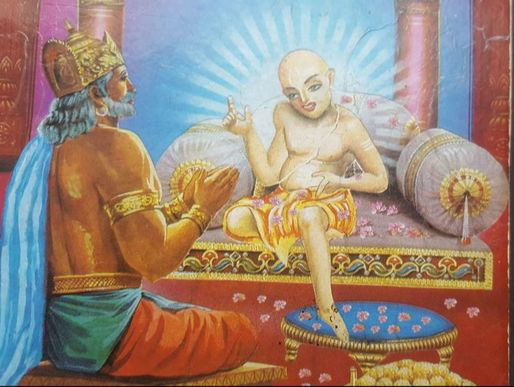|
Jai Bajrangbali – Perfect combination of Power, Intellect & Devotion
“मनोजवं मारुततुल्यवेगं, जितेन्द्रियं बुद्धिमतां वरिष्ठ । वातात्मजं वानरयूथमुख्यं, श्रीरामदूतं शरणं प्रपद्ये ।“ (Meaning: Manojavam – One who is swift as mind, Maarutatulyavegam - has speed equal to the wind God, Jitendriyam - has complete control on his senses, Buddhimataamvarishtham - most senior among intellectuals, Vaataatmajam - son of wind God, Vaanarayoothamukhyam - chief of vanara army, Shree raamdootam - messenger of Rama, I take Refuge). Shree Hanuman is with phenomenal physical, mental, intellectual, and spiritual powers and ardent devotee (bhakt) of Shree Rama. He is known for his erudition, bravery, velour and above all his great self-effacing humility. Tulsidas ji has lucidly elaborated the attributes of Hanuman ji in various verses of Sunderkand, Lankakand, Hanuman Chalisa, Hanumanshtak and Bajrang Ban. He demonstrated eight perfections while crossing Indian Ocean, entering Lanka, presenting before Mata Sita, burning the Lanka, killing demons, bringing life-saving herbs from Himalayas, killing Ahiravana, and at many other places. Shree Hanuman (whose jaws are prominent) has many names such as Anjaneya (son of mother Anjana), Maruti (son of wind god), Pawansuta (son of wind god), Kesarinandan (son of kesari), Shankara Suvana (son of Shiva), Bajrangbali (whose limbs are as strong as vajra), Mangalmurti. Sri Vivekananda says: Shri Rama was the Paramatma. Sita was the Jivatma, and each man’s or woman’s body was the Lanka. Sita, thus imprisoned and trying to unite with her Lord, receives a visit from Hanuman, the Guru or divine teacher, who shows her the Lord’s ring, which is Brahma-Jnana, the supreme wisdom that destroys all illusions; and thus Sita finds the way to be at one with Shri Rama, or in other words, the Jivatma finds itself one with the Paramatma. Hanuman as Symbol of selfless Devotion & Dedication: Hanuman ji is symbol of pure devotion, unconditional faith, total surrender to Shree Rama, absence of ego. Hanuman ji is generally seen in temples standing with a mace in the right hand or sitting in a devotional posture before the images of Rama and Sita. Sri Ramakrishna Pramhansa says, ‘Hanuman kept the “servant ego” after realizing God in both His Personal and His Impersonal aspects. He thought of himself as the servant of God.’ This is the ‘ego of Devotion’. He does not nourish any kind of ego but surrenders himself, body and soul to Shree Rama. Under Navdha Bhakti, devotion of Hanuman ji comes under Dasya Bhakti. In Hanuman Chalisa (verses 12 to 15), Tulsidas ji has mentioned that Shree Raghu Ram praised Hanumanji and said:
As great devotee, Hanuman ji is praised by Tulsidasji all over Ramacharitramana and Hanuman Chalisa. A few verses from Hanuman Chalisa and Ramacharitramanas are mentioned hereunder: Hanuman Chalisa
Ramcharitramanas
Hanuman ji as symbol of power, courage & intellect: Hanumanji is revered as symbol great power and supremely intelligent. Therefore, he is called as “Mahaveer” and “Mahabali”. Hanuman ji is highly intellectual, learned in Vedanta philosophy, the Vedas, a poet, grammarian etc. As per Puranas, Hanuman was taught the Vedas and all other branches of learning by Sun God himself, Surya. He learnt his lessons by trotting alongside the Sun's chariot as it moved across the sky. Hanuman ji was granted wishes of exemplary powers by several gods viz. Indra, Agni, Vayu, Varuna, Vishnu, Shiva, Surya, Kuber, Yama, Vishwakarma and Brahma. Indra granted the wish that his body would be as strong as Indra's Vajra. Agni granted the wish that fire won't harm him; God Varuna granted a wish that water won't harm him; God Vayu granted a wish that he will be as fast as wind and the wind won't harm him. Lord Brahma granted a wish that he can move at any place where he cannot be stopped at anywhere, Lord Vishnu granted a weapon for Hanuman which is named as "Gada".Hence this wishes makes Hanuman an immortal (Chiranjivi), who has unique powers and strong. From Shiva he obtained the boons of longevity, scriptural wisdom and ability to cross the ocean. Shiva assured safety of Hanuman with a band that would protect him for life. Surya gave him two siddhis of yoga namely "laghima" and "garima", to be able to attain the smallest or to attain the biggest form . Yama, the God of Death blessed him healthy life and free from his weapon danda, thus death would not come to him. Kubera showered his blessings declaring that Hanuman would always remain happy and contented. Vishwakarma blessed him that Hanuman would be protected from all his creations in the form of objects or weapons. A few verses from Hanuman Chalisa and Ramacharitramanas are being quoted hereunder: Hanuman Chalisa:
Hanuman ji demonstrated his power, intellect and decision making at several places. Details as under:
0 Comments
Jai Shree Hanuman – the Chiranjeevi
“ॐ हनुमते नमः” Shree Hanuman is one of the most revered deities across India. The worship of Hanuman cuts across sects and communities of Hindus. Vaishnavas worship Garuda and Hanumān alike as the mounts of Vishnu. Shaivas worship Hanuman as an incarnation of Shiva or the eleventh Rudra. Hanumān is also a manifestation of Shakti. The tantrikas worship one-headed, five-headed and eleven-headed Hanuman for spiritual attainment. Madhvacharya, the founder of the Dvaita school of Vaishnava philosophy, called himself the incarnation of Hanuman. Hanuman ji is one of the Chiranjeevis (immortals) who lives in all four ages. Besides being a popular deity in Hinduism, Hanuman is also found in Jainism and Buddhism. Outside of India, Hanuman is known in countries which were influenced by the Hindu culture such as Myanmar, Thailand, Cambodia, Malaysia and Indonesia. Hanuman as Chiranjeevi: Tulsidas ji has mentioned that splendor of Hanuman ji fills all the four ages and his glory is famed throughout the world (चारों जुग परताप तुह्मारा । है परसिद्ध जगत उजियारा ॥२९॥ Hanuman Chalisa)
The legends about the Birth, Birth places, forms of Hanuman ji is mentioned hereunder: Ashtavakra – the Self-Realised Saint
Sri Ashtavakra is a revered Vedic sage in Hinduism. His name literally means "eight bends", reflecting the eight physical handicaps he was born with. As per historians, the period of Sri Astavakra lived over 7000 years ago. However, as per Vedic calculations, it may be over one to two lakhs years ago. Guru Ashtavakra, a self-realized saint of Advaita philosophy, held dialogue with the disciple King Janaka of Mithila Kingdom on self-realization or enlightenment. Ashtavakra Gita (298 Sutras, 20 chapters) or song of Sri Ashtavakra is the detailed account of this dialogue. Three legends are popular relating to Ashtavakra as under:
1. Astavakra preach about spiritual experience or enlightenment as under: a. People reside in body, mind, buddhi and ego where he feels about pleasure-pain. Anger, greed, attachment, lust etc. arise from them. b. Away from body, mind, buddhi and ego, is pure consciousness (Jivatma, soul). Jivatma is non-doer, non-enjoyer, not bound but only witness. Experience of Jivatma is moksha. All individual jivatma combined together are Brahman. c. Sri Ashtavakra claims that spiritual experience or enlightenment or wisdom (आत्मज्ञान) can be instantaneous. However, it has three requisites viz. one should be seeker, one should be is worthy for it and presence of enlightened teacher (सद्गुरु). d. To be worthy, one should be free from ego, absolute surrender, free from sentiments (feelings, attitudes) of body & mind, emptiness from knowledge of scriptures and make himself free from external benefits.
मोको कहाँ ढूंढे रे बन्दे | मै तो तेरे पास में | ना तीरथ में ना मूरत में |ना एकांत निवास में | ना मंदिर में ना मस्जिद में | ना काबे कैलास में | ना में जप में ना में तप में | ना में बरत उपास में | ना में क्रिया करम में रहता |नहिं जोग संन्यास में | ना ब्रह्माण्ड आकाश में | ना में प्रकृति प्रवार गुफा में | नहिं स्वांसो की स्वांस में | खोजि होए तुरत मिल जाऊं | इक पल की तालास में |कहत कबीर सुनो भई साधो |मै तो हूँ विश्वास में | Where do you search me? I am with you, Not in pilgrimage, nor in icons; Neither in solitary living; Not in temples, nor in mosques; Neither in Kaba nor in Kailas; Not in prayers, nor in meditation; Neither in fasting or prohibition; Not in vedic procedure; Nor in yogic postures; Not even in sky or universe; Neither in womb of nature; Not in the breath of the breaths; If you are a true seeker; In a moment than you discover; Says Kabir, listen with care, where your faith is, I am there. List of the chapters and topics are as under: |
Archives
May 2024
Categories |



 RSS Feed
RSS Feed